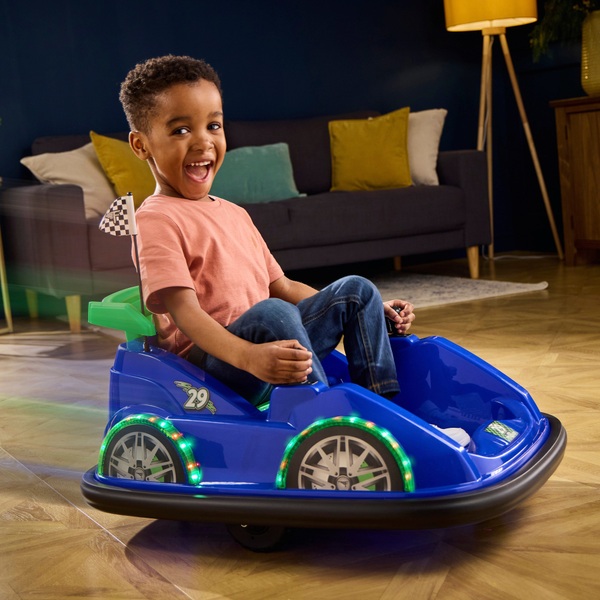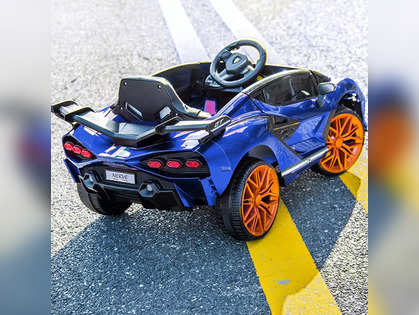Excellent Info For Choosing Kids Cars
Excellent Info For Choosing Kids Cars
Blog Article
What Are The Most Important Safety Features I Must Consider When Purchasing A Ride On Car? Pros And Cons
It is essential to think about safety features when you are choosing a ride with your children. These features will help keep them safe and entertained while playing. Seat Belts and other safety features are important.
The benefits of seatbelts are that they keep your child inside the ride-on vehicle, reducing chance of them falling out or being kicked out while playing. They also provide an additional layer of security, particularly during sudden stops or turns.
Cons - Certain rides on cars may not have seat belts. This is particularly true for those that are designed specifically for children. Seat belts are also uncomfortable for children, leading children to avoid or not want to use it.
Sturdy Construction
Pros: A robust ride-on vehicle made of top-quality materials will last longer and is less likely to break. This ensures the safety and security of your children. It can withstand the demands of playtime, and provides stability when used.
Cons - The expense of a durable structure could be high, making the vehicles unaffordable for many families. The heavier materials used may hinder the flexibility and maneuverability.
Low Center of Gravity
Pros: Ride-on vehicles with a low center of gravity have a lesser chance of tipping over. This decreases the risk of injury or accident. They are more stable and provide greater balance, particularly in turning and maneuvers.
Pros - Ride-on vehicles that have a low centre of gravity may compromise the ability to drive off-road or have a higher ground clearance, which restricts their range of use.
Remote control for parents
Pros: Remote-controlled cars give parents the capability to monitor and supervise their children's activities, giving an additional layer of control and security. Parents can intervene in the event of an emergency arises, or navigate difficult terrain, or avoid collisions.
Cons - Parental remote control can hinder children's independence and autonomy, since they depend heavily on parental supervision and assistance while playing. Remote-controlled vehicles can be more expensive than ride-on vehicles which are operated manually.
Speed Limiters
Pros - Ride-on vehicles with speed limiters or adjustable speeds enable parents to regulate the maximum speed and reduce the risk for accidents or collisions. They can increase the speed to the max as their child's confidence grows.
Cons - Children could quickly outgrow their lower speed settings. This can lead to frustration or dissatisfaction. Also, some models may not come with speed limiters or require other features or accessories.
Safe Start Technology -
Pros - The ride-on vehicle is engineered to start and stop without a hitch. It reduces the chance that the child will be startled or become unstable. It ensures a safer and more comfortable ride.
Cons - Models that include the safe start feature might cost more than those without. Moreover, some children might discover that a gradual acceleration and deceleration are not as fun or exciting than instant starting and stopping.
Visibility Enhancements
Pros: Ride-on vehicles that have improved visibility, such as taillights and headlights made of or reflective materials can increase visibility in dimly lit or low light conditions. The vehicles are more visible, which increases safety.
Cons - The increased visibility may cause the battery to drain more quickly, or increase the level of complexity. This can increase the chance of problems or maintenance.
Take a look at these safety features consider their pros and cons and choose a ride on vehicle that can be a priority for your child's safety while giving them a great and enjoyable play experience. See the recommended remote control childrens cars for more recommendations including toy car for car, lambo toy car, kiddies cars, toy car toy car, ride ons, two seater childrens electric cars, 2 seater electric cars, lambo toy car, toy car, ride of car and more. . 
What Are The Indoor And Outdoor Versions Of Children's Vehicles Designed?
These vehicles have been developed with specific features and characteristics specific to the environment and use scenario, outdoors or indoors. Here are the differentiators between these models Indoor Use Cars
Dimension and weight Cars designed intended for indoor use tend be smaller and lighter and can maneuver more easily within tight spaces like hallways, living rooms or playrooms. They can navigate through tight spaces and narrow passages with ease.
Low Ground clearance: Indoor vehicles have low ground clearance in order to avoid getting stuck on rugs, carpets or thresholds. This enables smooth, uninterrupted motion on indoor surfaces.
Smooth Wheels. Indoor cars often feature wheels made of substances that have a smooth surface, such as plastic or rubber. These wheels provide better grip and traction on smooth surfaces like laminate flooring, hardwood floors or tile. The wheels are designed to minimize noise and prevent scratching or scratching surfaces.
Tempo Limit - Cars in indoor environments are typically limited in speed, to allow for safe and controlled driving in small spaces. This prevents accidents and collisions with furniture, walls, or other obstacles commonly encountered in indoor areas.
Outdoor Use Cars -
Durable Construction – Cars for outdoor use are made from robust materials. They include robust plastics and metals that are able to stand up to the harsh elements outside, such sunlight, humidity and temperature variations. They are more durable against wear and tear due to exposure to outdoor conditions.
The greater the clearance on the ground, the better able they will be to deal with bumps and uneven terrain. This lets them traverse rough surfaces like gravel, asphalt dirt, grass, or even dirt without getting stuck or damaged.
Traction Tires - The tires of vehicles that are used outdoors are usually equipped with treads or patterns to give better grip and traction on rough or slippery terrain. This ensures stability and control when driving on terrains that are outdoors and prevents sliding or skidding.
Weather resistance. Outdoor cars are often equipped with weather-resistant parts like sealed electronics, waterproof casings, and rust-proof materials. This is in order to shield them from environmental damage. This allows them to withstand the elements of rain, mud, or puddles without compromising the performance.
High Speed - Outdoor use cars generally feature higher speeds in order to allow for open spaces and longer distances typically encountered in the outdoors. Children can enjoy an exciting and thrilling ride when exploring the outdoors.
Be aware of these features and traits when choosing a model to drive your child's car. It will be tailored to the conditions and uses that you have in mind whether indoors, outdoors or both. You will be able to ensure a long-lasting, fun and safe experience for your child. Follow the recommended read more for Audi kids car for more examples including childs ride on car, toy ride, electric rideons, ride a toy, ride a toy, 2 seater electric cars, electric ride on, electric ride on cars, car electric ride on, childs car toy and more. . 
What Are The Different Types Of Remote Controlled Kids Cars? What Are The Pros And Cons?
Remote-controlled vehicles for children, also known as RC cars, are offered in a wide range of styles, sizes and prices to meet different budgets and preferences. This article will provide an overview of the kinds, sizes, prices along with pros and cons of remote controlled children's cars The types of remote control Children's Cars
Electric RC Cars - Battery-powered remote-controlled vehicles that are suitable for outdoor and indoor use. The cars come in different styles such as buggies and trucks.
Nitro RC Cars – Gas powered remote controlled cars which provide better performance, but require more maintenance. They're generally bigger and more costly than electric RC car.
Scale Models Remote-controlled replicas of real-life vehicles which include cars, trucks aircrafts, and boats. Scale models come in different scales, ranging from 10- to 1-24 inches, with larger scales offering more details and authenticity.
Sizes -
The sizes of remote-control cars for children vary from tiny micro-sized models to larger-scale versions. Size can influence the performance of a vehicle in terms of speed, as well as its handling characteristics.
Micro-sized cars are small and light. They are ideal to use indoors with smaller children. These larger models offer more power and are durable and are perfect for off-road and racing in the outdoors. driving.
Prices
The cost of remote-controlled cars for children can vary depending on specifications, quality, and brand.
Electric and Nitro RC vehicles on a larger scale may cost between $100 and $500.
The price of scale models and hobby-grade RC vehicles can vary between a few hundred dollars to more than 1000 dollars, based on their performance and detail.
Pros and Cons
Pros -
Adults and children will have hours of fun and entertainment by controlling their cars via remotes.
Skills development The RC car helps children to develop their spatial awareness and hand-eye co-ordination.
Social interaction. You can go on RC vehicles with your family and friends that encourage social interaction.
Customization - A lot of RC cars can be customized by utilizing aftermarket parts, upgrades, and accessories to enhance performance and appearance.
Cons
Cost - A top-quality model with advanced features can cost a lot, particularly for hobby grade models.
Learning Curve – Operating a RC car requires some practice and. Children who are younger may struggle to control the controls.
Maintenance: Cars in RC require regular maintenance that includes cleaning and oiling. Occasionally, they also require fixing or replacing parts.
Safety Risks RC vehicles pose dangers to safety like falls, collisions and electrical dangers when they're not used under supervision of an adult and care.
In general, remote-controlled children's vehicles provide a thrilling and educational experience for kids of all ages. However, when choosing the best model for your child consider things like cost size, dimensions, features and security. Hobby-grade RC cars may be more suitable for older children and avid users, whereas simpler models are suitable for younger youngsters and those who are just beginning. Follow the best McLaren kids car for website examples including 2 seater electric cars, childrens ride on, two seater electric cars, toy with car, electric two seater cars, childrens electric cars, ride of car, kidscars, toy cars, electric car ride and more. .